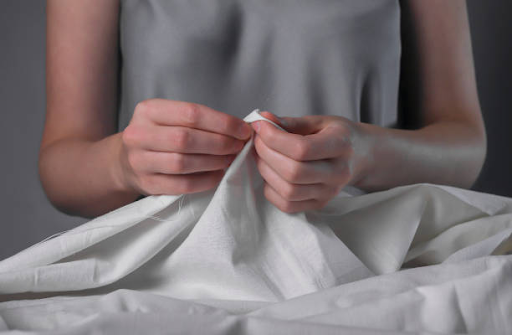Usually, "thread count" is front and centre on the packaging or product description when purchasing bedsheets. Often mentioned as a sign of quality, t
Usually, “thread count” is front and centre on the packaging or product description when purchasing bedsheets. Often mentioned as a sign of quality, thread count has turned into a significant marketing tool. What is thread count and how much does it matter for your comfort, sleep, and sheet life? By taking several factors into the count, this article will discuss the importance of thread count in bedsheets.
The Relationship Between Thread Count and Fabric Quality
In general, higher thread counts suggest denser, smoother fabric. Tighter, more packed threads create softer, more durable sheets. Sheets with 200–400 thread counts are generally good since they balance comfort and breathability. Often silkier and more opulent are thread counts between 500 and 800, but fibre quality is important. Though low-quality cotton sheets with a high thread count could feel rough or trap heat, premium cotton sheets with a low thread count might be more pleasant. The 180 thread count duvet set and sheets are ideal for home use as they provide a very comfortable feeling.
The Role of Fiber Type
Thread count cannot be evaluated by itself. Equally important, if not more so, is the sort of fibre used to construct the sheet. Its long-staple fibres make Egyptian cotton sheets smooth, strong, and breathable. Premium fibres such as Pima and Supima cotton enhance sleep. Compared to long-staple cotton sheets with moderate thread counts, short-staple cotton sheets with ultra-high thread counts may underperform. Apart from cotton, bamboo, linen, and microfiber all have different characteristics influencing softness, lifetime, and breathability regardless of thread count.
Debunking the Myth of Ultra-High Thread Counts
Recent years have seen consumers misled to believe that the better the sheet, the higher the thread count. This has resulted in advertising for sheets with 800, 1000, or 1500-thread-count. Fabric on a square inch can only be woven with so many threads. Using multi-ply threads—several thinner strands twisted together—some manufacturers exaggerate these numbers. Rather than counting one thread, they count every strand, therefore artificially raising the number. This approach could compromise quality, softness, and breathability. Rather than offer luxury, these too thick sheets could feel weighty, hold heat, and wear out quickly. Those who value quality above marketing hype should grasp this deception.
Thread Count and Breathability
Sleep comfort depends on temperature management; thread count defines sheet breathlessness. Moderate thread counts between 250 and 400 offer a soft feel and decent airflow. High thread counts, particularly in thick weaves and synthetic fibres, can limit airflow and hold body heat. For warm sleepers in particular, this makes sleeping hot and unpleasant. Moderate thread counts of natural fibres wick moisture and ventilate, so enhancing nighttime comfort.
The Importance of Weave
Depending on fabric weave, thread count influences sheet quality as well. Percale and sateen each have unique textures and advantages. A plain weave, percale is cool and matte. At 200–400, durability and breathability help it to be popular. Woven with more vertical than horizontal threads, sateen is smoother and shinier. Sateen sheets have greater thread counts and a richer feel even if they are less breathable and more prone to pill. Whether to use percale or sateen is a personal choice; yet, weave and thread count are key considerations.
Durability and Longevity
Combined with quality materials and manufacturing, thread count can influence sheet lifetime. Tightly woven sheets that resist pilling and fraying can be made from higher thread counts and stronger, long-staple cotton. High thread count multi-ply yarns could wear out more quickly as the twisted fibres deteriorate more quickly. With appropriate care and washing, sheets last longer. High-thread-count sheets even the finest ones deteriorate without washing and drying. Choosing bedsheets should therefore take into account thread count, fibre quality, weave type, and maintenance.
How Thread Count Affects Feel and Aesthetics
Your sheets’ feel is determined by thread count. High-quality, moderate-thread-count sheets feel smooth and light. Higher thread count sheets could feel heavier or silkier depending on the weave and fibre. Compared to an 800-thread-count ordinary cotton sheet, a 400-thread-count Egyptian cotton sheet feels more opulent. Higher thread count sheets seem more elegant on the bed since they have better finish and drape. Excess shine or gloss, particularly in synthetic blends, can compromise comfort. The correct thread count will guarantee a decent night’s sleep and provide your bedroom with texture and aesthetic appeal.
Conclusion
Thread count has always been the gold standard for bedsheet quality. Although it does influence how sheets feel, look, and last, it should be considered with other important elements including fibre quality, weave, and ethical manufacturing methods. High thread counts don’t always indicate better sheets; they can even make sleep less comfortable. Usually, high-quality sheets with reasonable thread counts for softness, breathability, durability, and value are the best. Understanding what thread count is and how it influences bedding quality enables consumers to create more educated, gratifying, and sustainable bedroom decisions.

COMMENTS